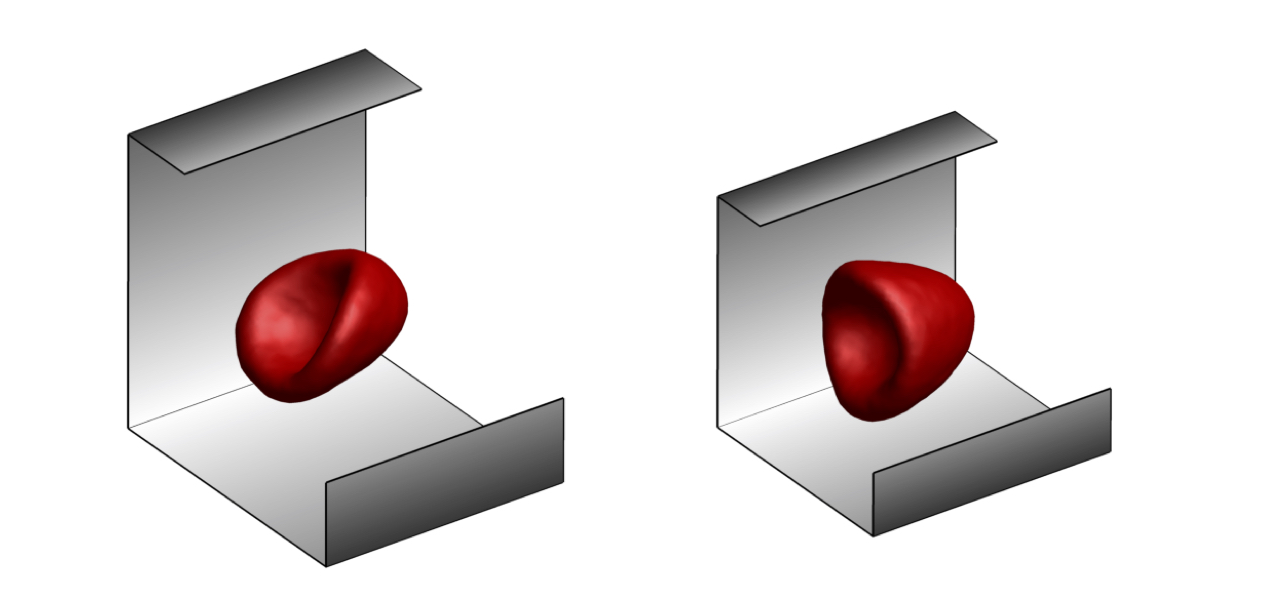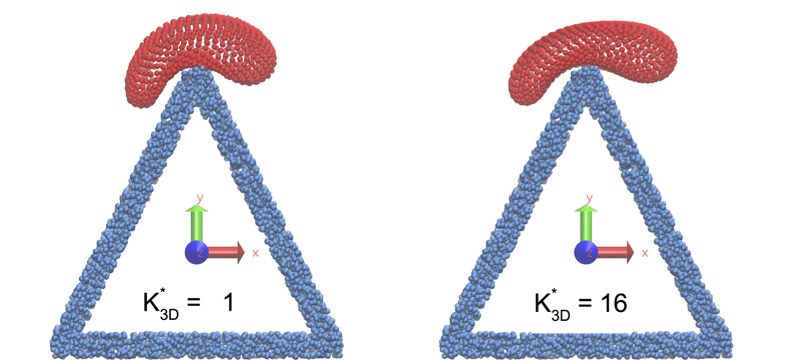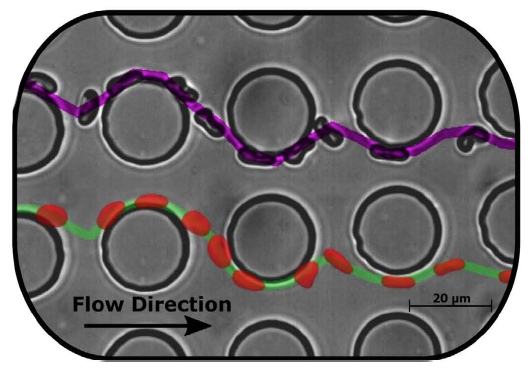Microfluidics
Microfluidic devices have a wide range of applications including the analysis of a micro-sample, the detection of rare solutes, cell sorting, etc. One type of microfluidic devices is called bumper arrays, which employs various obstacles of different geometry and structure. Complex geometry results in an intricate fluid flow within a device, whose properties can be exploited, for instance, to sort various suspended particles.
Characterization of erythrocyte shapes

The ability to change shape is crucial for the proper functioning of red blood cells under harsh conditions in the microvasculature, since their shapes strongly affect the flow behavior of whole blood. Our results from simulations and systematic experiments reveal the shapes and dynamics of red blood cells for different flow conditions and channel dimensions, generally in good agreement. However, in the experiments, cells do not exhibit a single well-defined shape for fixed flow conditions. We show that this distribution of shapes can be attributed to the variability in mechanical properties of red blood cells.
- F. Reichel, J. Mauer, A. A. Nawaz, G. Gompper, J. Guck, and D. A. Fedosov, "High-throughput microfluidic characterization of erythrocyte shapes and mechanical variability", bioRxiv, doi: 10.1101/488189, 2019.
- D. A. Fedosov, M. Peltomäki, and G. Gompper, "Deformation and dynamics of red blood cells in flow through cylindrical microchannels", Soft Matter, 10, 4258-4267, 2014.
Bumper arrays with sharp-edged obstacles

Sorting cells based on their intrinsic properties is a highly desirable objective, since changes in cell deformability are often associated with various stress conditions and diseases. Using mesoscopic hydrodynamics simulations, we demonstrate prominent advantages of sharp-edged obstacles for probing deformability properties of red blood cells. By consecutive sharpening of the pillar shape from circular to diamond to triangular geometry, a pronounced cell bending around an edge is achieved, serving as a deformability sensor.
- Z. Zhang, W. Chien, E. Henry, D. A. Fedosov, and G. Gompper, "Sharp-edged geometric obstacles in microfluidics promote deformability-based sorting of cells", Physical Review Fluids, 4, 024201, 2019. Highlighting synopsis in the APS's journal Physics.
Sorting cells in DLD devices

Microfluidic technologies have a great potential for cell sorting; however, the design of many micro-devices is based on theories developed for rigid spherical particles with size as a separation parameter. Clearly, most bioparticles are non-spherical and deformable and therefore exhibit a much more intricate behavior in fluid flow than rigid spheres. We demonstrate the use of cells' mechanical and dynamical properties as biomarkers for separation. The dynamic behavior of red blood cells (RBCs) within deterministic lateral displacement (DLD) devices is investigated for different device geometries and viscosity contrasts between the intra-cellular fluid and suspending medium. We find that the viscosity contrast and associated cell dynamics clearly determine the RBC trajectory through a DLD device.
- E. Henry, S. H. Holm, Z. Zhang, J. P. Beech, J. O. Tegenfeldt, D. A. Fedosov, and G. Gompper, "Sorting cells by their dynamical properties", Scientific Reports, 6, 34375, 2016.
- Z. Zhang, E. Henry, G. Gompper, and D. A. Fedosov, "Behavior of rigid and deformable particles in deterministic lateral displacement devices with different post shapes", Journal of Chemical Physics, 143, 243145, 2015.